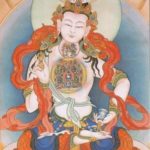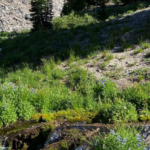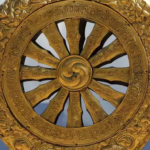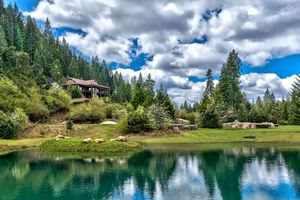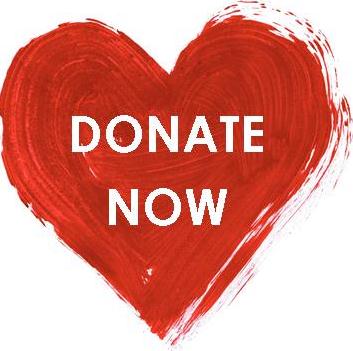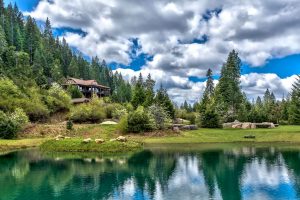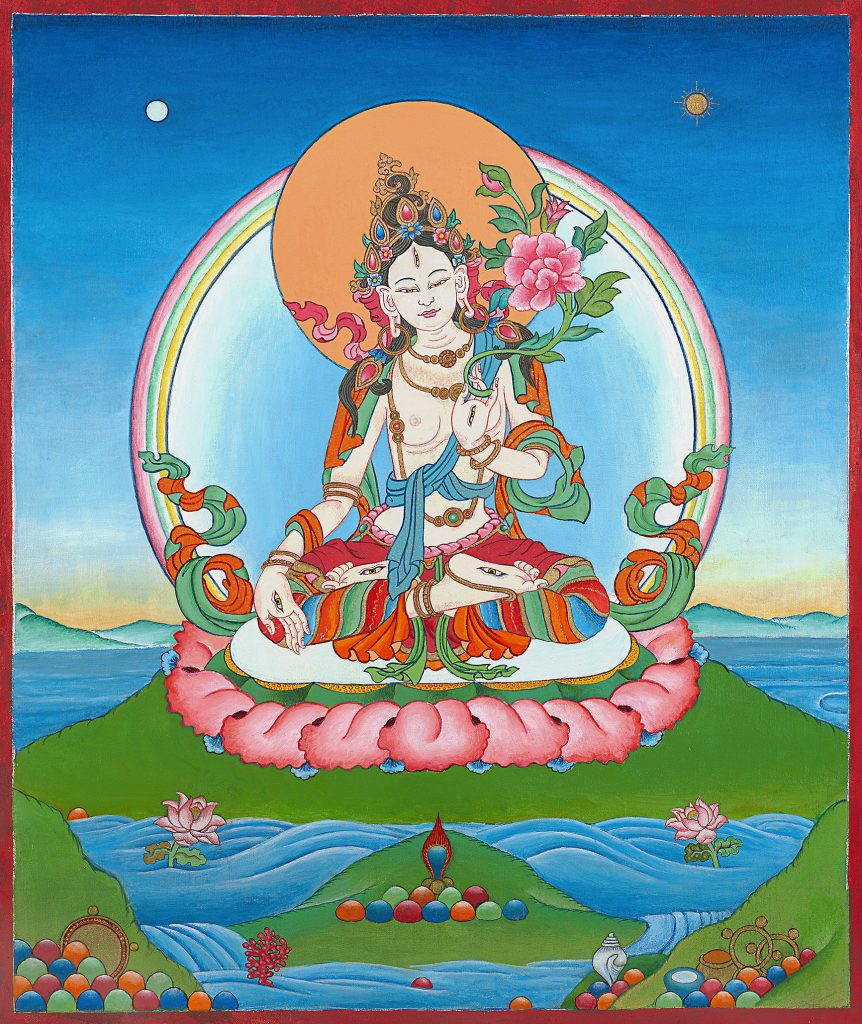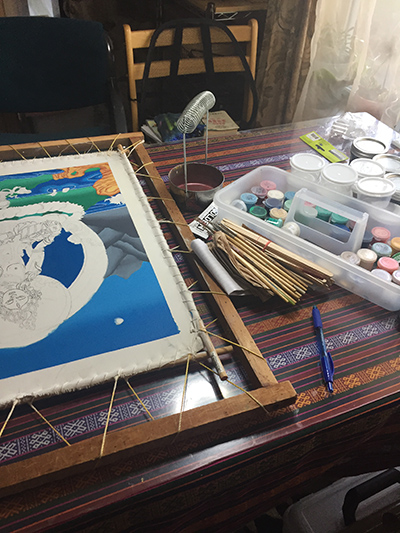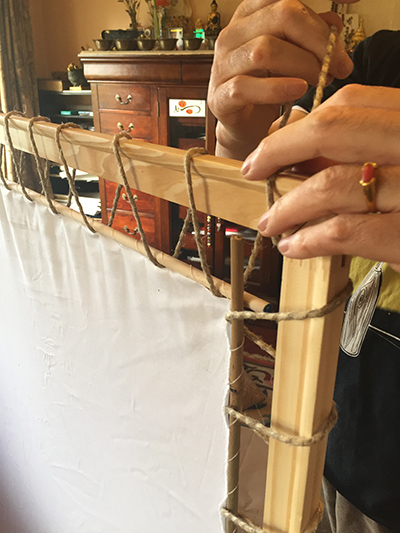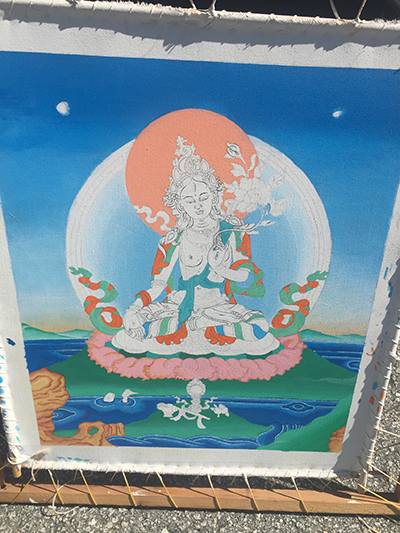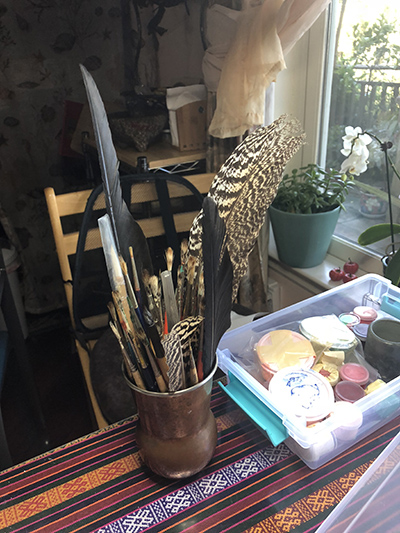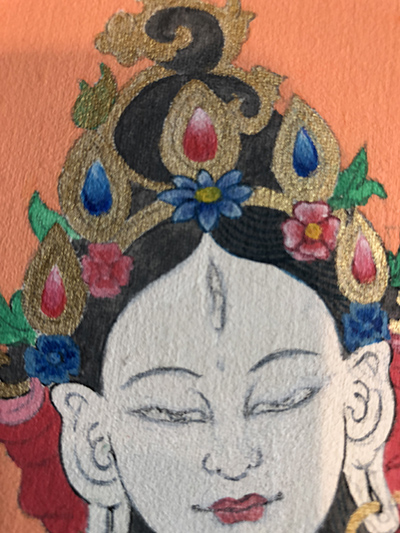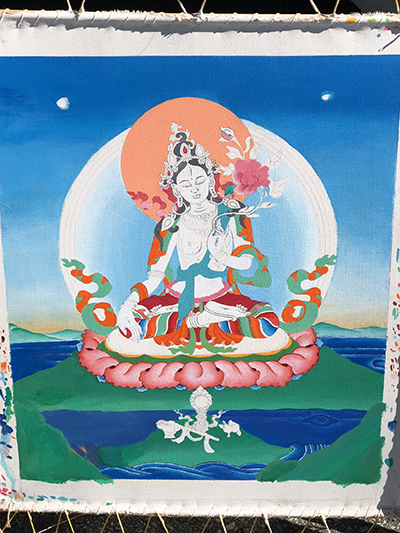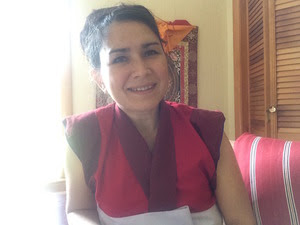
Then one day I was in Tibet. I had been driving along this tiny little road. It looked to me not much wider than a sidewalk, and it was hugging the mountainside. Everywhere I looked, there were trees, mountains, rivers, the most beautiful place I had ever seen. It went on like this for days and days on a journey to Yarchen Gar, a dzogchen encampment of ten thousand nuns. As far as the eye could see, pristine naturalness. The colors of nature and the expanse of an undomesticated landscape. My destination was at 13,000 feet high in the Himalayas, so the vistas were vast and the air was so pure. When I got to my destination, the nuns were on the hillside sky-gazing, a Dzogchen meditation practice. By a temple, there were dozens of black crows feeding at an enormous bird feeder and then flying into the sky only to be succeeded by more and more black crows. The sky loomed over us but felt so close because of the altitude. I ended up at the burial grounds on a hill overlooking all of this and I realized that this was a perfect landscape.
It was then I remembered a passage from Longchenpa’s Great Chariot, a commentary on Resting the Mind in Natural Ease. It is a passage about how to cultivate the four immeasurables – Love, Compassion, Joy and Equanimity – the four states a yogi lives for…
On the rich, green earth of kindness, in a joyful place of refreshment for people, various kinds of flowers of compassion open and blossom. Many birds and deer are enjoying the cool shade of pleasant trees. From lakes, ponds, and good springs of equanimity, flow a collection of many streams, where travelers tired out by samsara can refresh themselves. Weariness of mind is eased and cleansed away.
I remembered this passage, a poetic explanation of the four immeasurables in terms of a landscape. This is the power of some places, they communicate certain states of being. I realized that day that I was in a landscape of the Great Perfection, Dzogchen, that it was not just a Dzogchen monastery but that the place itself elicited a sense of natural nirvana.
Here in the valleys and peaks of Tibet, the mountainsides travelled by Longchenpa himself, I could see what it means to do spiritual practice in a place that reiterates the same point as the teachings – a landscape of authenticity, naturalness, spontaneity, spaciousness, opening, letting go and intrinsic freedom. It was a landscape where the sense of integration with vast fields of interconnection came easily. These are teachings that wild natural places sometimes give us. There is something liberating about being surrounded by open space, endless sky, sounds of rivers, lovely valley meadows and high mountain peaks.
That was the day I reclaimed my dream of Dakini Mountain.
Dakini Mountain is a dream that I have had for more than a decade. It is the vision of a retreat center that expresses the power of the five elements, which is a meaning of the Dakini principle in Tibetan Buddhism. When I first raised the idea to the community, everyone I spoke to about it supported it, but we just couldn’t make it happen at the time. After a while, as we sometimes have to do with dreams, I reluctantly put the dream away, tucked it into my back pocket and moved on from my dream, consumed with my teaching activities and studies around the world. Then from time to time I would bring up the idea again to a few students and we would struggle with how, where, and when. Someone wanted it in one place. Someone else wanted to be sure it was not there. And there were the practical obstacles and complications. So the Dakini Mountain dream lay dormant for a long, long time. I had given up…until that day in Tibet, when everything came together and I suddenly realized why it was so urgent and so important to make this happen. I became determined. I felt it was time. I dusted off that dream and brought it back to life. It was then that I announced my plans to our community, and the rest is the history we are now making.
Now we have finally found the place for the dream of Dakini Mountain to be realized. It is located just outside of Lake Tahoe, in Northern California, not too far from the Nevada border. I knew this was the place because when I stood there at the lodge looking out over the park, I realized it was the most beautiful place I had ever been, equal only to that very place that day in Tibet when I resolved to revive the Dakini Mountain dream. This place has that same feeling – the stunning beauty, the quiet, the openness, and the pristine quality. And miraculously, it checks off all the other boxes as well. It has the right zoning, the right Vastu, the right ecology and the right accessibility – a coinciding of factors extremely rare to find.
There are so many good reasons to donate to this cause.
So many positive intentions have ripened to begin this process, and through some extraordinary turn of good fortune, we opened escrow in September. Now we are on a journey to making Dakini Mountain a reality and I am asking for your help in making it possible.
We need to spend time in nature – but to do that we need to preserve natural places and support sustainable communities. Yet, last year saw the largest reduction in protection in public park lands in U.S. history. This is a cause we can contribute to through Dakini Mountain, in a small way, but a powerful way, we can contribute our commitment to sustainability and preservation at the grass roots level. Since the beginning of our organization, we have been committed to sustainability in our building, supplies and lifestyle. To have a land dedicated to engaging and teach these principles will take these activities to the next level.
Dakini Mountain will be dedicated to diversity – because diversity is a primary Dakini principle. The whole notion of the five wisdom Dakinis is the expression that sacredness is expressed in diverse forms. I remembered going to retreat centers that only allowed certain kinds of Buddhists, or only Buddhists, and that may be what is right for them, but I want Dakini Mountain to be a place for all kinds of people. As you know this is a mark of our community. We are diverse in every way, race, ethnicity, age, gender, national origin, sexual orientation, socio-economic status, and even religion. This diversity is precious and beautiful. I believe in building bridges. We are told that this site for Dakini Mountain was an area where many Native American tribes gathered together to convene, to pray together and plan together. I see Dakini Mountain as a continuation of that theme, a place where diverse groups can come together and refresh themselves. As you may know, I am a Native American woman and so you can see that with this land’s history, this site seems like an ideal place for Dakini Mountain to arise.
Dakini Mountain will be a joyful place.
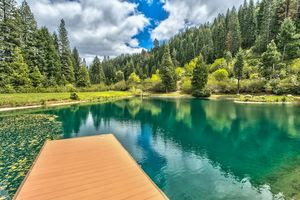 One of the things I love about this site is that it is fully equipped with a pond and one hundred pairs of ice skates! It also has a ropes course and a zip line that lands in the pond. This year, two different retreat centers told us that our group was the most joyous group they had ever rented their retreat center to. They told us that we laughed the most, and were the most relaxed and joyous. This feedback meant so much to me. I have strived to nourish a community for the study of Buddhist philosophy and meditation that taps into the sense of natural joy, humor, relaxation and love that is possible. I believe we can do deep spiritual training while remaining light hearted, kind and open-minded.
One of the things I love about this site is that it is fully equipped with a pond and one hundred pairs of ice skates! It also has a ropes course and a zip line that lands in the pond. This year, two different retreat centers told us that our group was the most joyous group they had ever rented their retreat center to. They told us that we laughed the most, and were the most relaxed and joyous. This feedback meant so much to me. I have strived to nourish a community for the study of Buddhist philosophy and meditation that taps into the sense of natural joy, humor, relaxation and love that is possible. I believe we can do deep spiritual training while remaining light hearted, kind and open-minded.
Dakini Mountain is also an important place to birth in this time, right now. We are in a period of unprecedented involvement of female leaders and practitioners in Tibetan Buddhism in an age where, for the first time in Buddhist history, a vision of gender equality is becoming more and more possible to manifest. This has always been important to me in organizing our community, for obvious reasons, as a female teacher. But I have also made a deliberate effort to have gender diversity and inclusion represented in our leadership and in the various tiers of the sangha. I don’t think that the timing of Dakini Mountain is an accident. This is the era of the first Geshemas, the era of #metoo and the tidal waves of change it has set in motion in American Buddhism. Follow through on these beautiful movements is needed – one important form of which is the support for Buddhist centers run by women. And especially, support for Buddhist centers who are explicitly dedicated to gender equality. I see this as our generation’s great contribution to the history of Buddhism. The Dakini principle in Tibetan Buddhism appears in literature as enlightened women. The fact that they were women in that context was more than a story about female bodies, it was a proclamation of the possibility of enlightened wisdom manifesting in all the forms we least expect it, and especially in the forms which everyone said could not be enlightened beings. This is the very teaching of the Great Perfection – that all of us, whatever size, shape, color, status, or origin, we all have buddha-nature – a capacity for wisdom and an intrinsic goodness.
Every year we have a year-end fundraiser. This is how our organization continues to thrive and how we can keep operating and offering all our services. Each year this fundraiser includes both raising funds for our organization itself and for the projects we support through our charity Ngakpa House. But this year, the project we are fundraising for is our own project – Dakini Mountain.
This process of bringing Dakini Mountain to life has not been easy, and we have a long way to go. We are a small organization, we really need your help and every effort makes such a decisive difference.
We have so many plans for Dakini Mountain. But they can only manifest with your support. Every donation makes a difference, small or big. It all adds to the momentum which will make Dakini Mountain possible.
Your donation acts as an encouragement.
Your donation is a positive sign.
Your donation is a good omen.
Your donation brings us one step closer.
Your donation is a crucial support.
A donation to Dakini Mountain is a pivotal action for good. It is a worthy cause and a beautiful dream, a place that will nourish the spiritual lives of many people to come.
For beauty… For meditation… For nature… For sustainability… For diversity… For Joy… For gender equality…. There are so many good reasons to donate to Dakini Mountain.

Today is giving Tuesday – I ask for your support through donations today and every day until we meet our goal. This is a wonderful time to donate, we are a non-profit organization, your donations are tax-deductible. Get your donations in by the end of the year for a tax-deductible charitable donation!
Please also share our fundraiser on your social media and help us keep Dakini Mountain trending.
To read more about our project visit: https://www.gofundme.com/
In the very near future, may we meet at Dakini Mountain,
![]()
It’s so close!
The Retreat Center we’ve all been waiting
(and praying) for —
let’s meet at Dakini Mountain.
This is how we get there:
Dear Friends,
As we enter this holiday season, there are so many reasons we are all wishing for peace. Dakini Mountain will be born from that wish. Join us in making this center a reality.
“The Dakini is also the initiatory principle in Tibetan Buddhism.
It represents enlightenment being revealed in the least expected forms.
As such, it is the ultimate affirmation of the Buddha-nature in every person.”
– Pema Khandro
We now have a special gift being offered to donors – a White Tara scroll painting. White Tara is the female Buddha who embodies pure peace, forgiveness, extension of life, protection from destructive forces, and the bliss of recognizing our innate wisdom.
Below you will find some Very Special White Tara Gifts that one of our members would like to give you as a special thanks for your generous donations.
All donations will go to the Phase 1 funding of Dakini Mountain.
We are still currently in escrow and need your donations and support Now more than Ever before!
Dakini Mountain
We are a small grassroots organization, so your donations, however small or big, have a direct impact on whether Dakini Mountain will be a reality!
“We must work together to create Dakini Mountain
– a place that celebrates wisdom and diveristy –
– a refuge born from our collaboration and generosity.”
~ Pema Khandro
Ngakpa Intl is a 501(c)3 non-profit organization.
All donations are Tax Deductible. Federal Tax Id# 68-0529687
May we meet at Dakini Mountain!
Very Special Gift for You
One of a Kind – White Tara Thangka Print
This White Tara was created by Heather Madden, also known as Rindzin Prema, who has been studying with Pema Khandro Rinpoche since 2002.
Due to Rinpoche’s encouragement, Rindzin began studying with a famed thangka painter in Europe to learn the art of thangka painting to benefit the Community of Buddhist Yogis. She was passionate about learning and studied during her work breaks every year since 2003. In 2017, Rindzin’s stepfather became so inspired by her artwork and devotion to the practice, he decided to sponsor her so she could pursue thangka painting full-time. She then began a full-time study of the thangka practice with a master in San Francisco.
In honor of her stepfather, she completed this White Tara to remove all of her father’s health obstacles and ensure his long life, as well as in honor of her Lama, Pema Khandro Rinpoche.
Rindzin has completed and gifted an enhanced image of this White Tara inlaid with gold to ensure her teachers’ long life and to remove any health obstacles.
Rindzin has also gifted this one of a kind White Tara image to Ngakpa International and advised that whoever received this White Tara will also receive the blessings.
This special thangka image will not be reproduced outside of Ngakpa International or for any other purposes. The image is meant for members and practitioners of Ngakpa International only, however, because of the importance of the Dakini Mountain location, donors now have an opportunity to receive this very special print of White Tara.
Message from the Artist
“This White Tara was made with great devotion and in a traditional manner. The original is stretched cotton sized with yak glue. The paint was made from stone pigments mixed with various binders and acrylic paint was used as well. The painting itself is painted in Karma Gadri style, which has greater compositional depth and detail as it combines all other styles, and is also considered a depiction reference of the ‘pure land’. The two flowers in front are for my stepfather and mother. During its creation mantras and pujas were performed. When the eyes were ‘opened,’ referring to the painting of the eyes last to bring the thangka to life, it was done on the first day of the full moon. When done properly, the thangka will be ‘alive’ and subtle energy emanating from the image will affect the practitioner. If you are to receive one of these images please treat it with respect, devotion, and honor. It will benefit your life.”
The artist has donated proceeds for a limited number of these prints as gifts for the donors of Dakini Mountain, as follows:
Archival Pigment Print – on Archival Paper
$1200 Donation – Small size 8×10”
Archival Pigment Print – on Premium Canvas
*Enhanced by the artist*
$2400 Donation – Small size 9×11
$3600 Donation – Medium size 12×14.5
$5000 Donation – Large Size 17×22 (*only one available in this size)
*Canvas prints to be framed or brocaded by the donor
Please make your Donation directly into our Dakini Mountain GoFundMe Campaign, and we will contact you for details on where to send your rare and beautiful One-of-a-Kind White Tara Thangka print.
“White Tara is the form of Tara associated with peaceful and healing energies. She has seven eyes: a third eye in her forehead, and four more in the palms of her hands and the soles of her feet, symbolizing her ability to see whatever is ailing whomsoever, wheresoever. Her left hand holds the stalk of a blossomed lotus with a blazing wish-fulfilling jewel on top, while making the gesture of fine discernment to stimulate the precise insight and wisdom of her proteges, holding up the three back fingers to represent the three jewels of refuge: Buddha, the Teacher, Dharma the reality (as well as the teaching of how to understand it), and Sangha, the community of those who do understand it or are trying to as best they can. Her left hand extends downward with the open palm forward in the boon-granting or, more literally, “giving of her best” gesture. When any Tibetan or Mongolian or Manchurian Buddhist is sick, they only have to recite her mantra, om tare tuttare ture svaha, and if their faith is strong enough they will instantly feel better and regain good health.”
-A Shrine for Tibet
The Alice S. Kandell Collection, 2009
Want to be sure you don’t miss any news?
- Find Info and Updates on Dakini Mountain
- Find our news service online at PemaKhandro.com
- To read more about Pema Khandro Rinpoche visit PemaKhandro.org
- Find the Teachings Library for members at Ngakpa.org
- Learn about natural health at YogicMedicineInstitute.org
